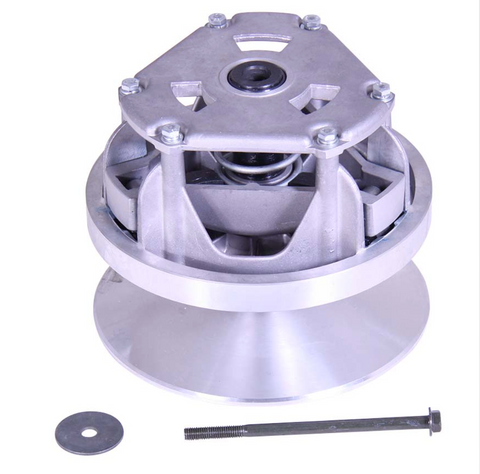A Continuously Variable Transmission (CVT) belt is a type of transmission that uses a belt and pulley system instead of traditional gears to transfer power from the engine to the wheels. The belt in a CVT is made up of several metal plates connected by a strong rubber material. The belt rides on two pulleys, called the primary and secondary pulleys, which can change their effective diameter to vary the gear ratio and control the speed of the vehicle.
When the engine is running, the primary pulley receives power from the engine and transmits it to the belt. The belt then transfers the power to the secondary pulley, which drives the wheels. By varying the effective diameter of the pulleys, the transmission can change the gear ratio to achieve the desired speed.
The CVT belt is designed to handle a wide range of power levels and speeds without slipping or breaking. However, over time, the belt can wear out and need to be replaced. It's important to follow the manufacturer's recommended maintenance schedule to ensure that the belt is in good condition and functioning properly.
What are the advantages of a CVT Transmission?
A Continuously Variable Transmission (CVT) offers several advantages over traditional transmissions:
-
Smooth acceleration: A CVT allows for smoother acceleration as there are no gear shifts. The engine can operate at its most efficient RPM for a given speed, resulting in a smoother ride.
-
Improved fuel efficiency: Because the engine can operate at its most efficient RPM, a CVT can provide better fuel economy than a traditional automatic transmission.
-
Better performance: A CVT can provide faster and smoother acceleration than a traditional transmission because there are no gear changes, allowing the engine to maintain peak power output.
-
Simplified design: A CVT has a simpler design than a traditional automatic or manual transmission, which can result in fewer mechanical components and less maintenance.
-
Lower cost: Due to their simpler design, CVTs can be less expensive to produce than traditional transmissions.
Overall, a CVT can offer improved performance, better fuel efficiency, and a smoother driving experience. However, some drivers may find the lack of gear changes to be less engaging than a traditional manual or automatic transmission.
What is a torque converter?
A Continuously Variable Transmission (CVT) does not have a traditional clutch like a manual transmission, but it does have a type of clutch known as a torque converter. The torque converter allows the engine to transfer power to the transmission without stalling the engine when the vehicle is at a stop.
In a CVT, the torque converter is responsible for transmitting the engine's power to the transmission. The torque converter consists of two primary components, the impeller and the turbine, which are separated by a fluid-filled housing. The impeller is driven by the engine and pumps fluid into the turbine, causing it to spin and transfer power to the transmission.
The torque converter in a CVT can vary its ratio depending on the speed of the vehicle, which allows for smoother acceleration and improved fuel efficiency. The CVT clutch, in this case, is essentially the torque converter, which allows for the transmission of power from the engine to the wheels without the need for a traditional clutch pedal.
In some CVT designs, there may also be additional clutches or bands that engage and disengage to change the gear ratio of the transmission. These clutches work in conjunction with the torque converter to provide smooth and efficient power transfer.




Share: